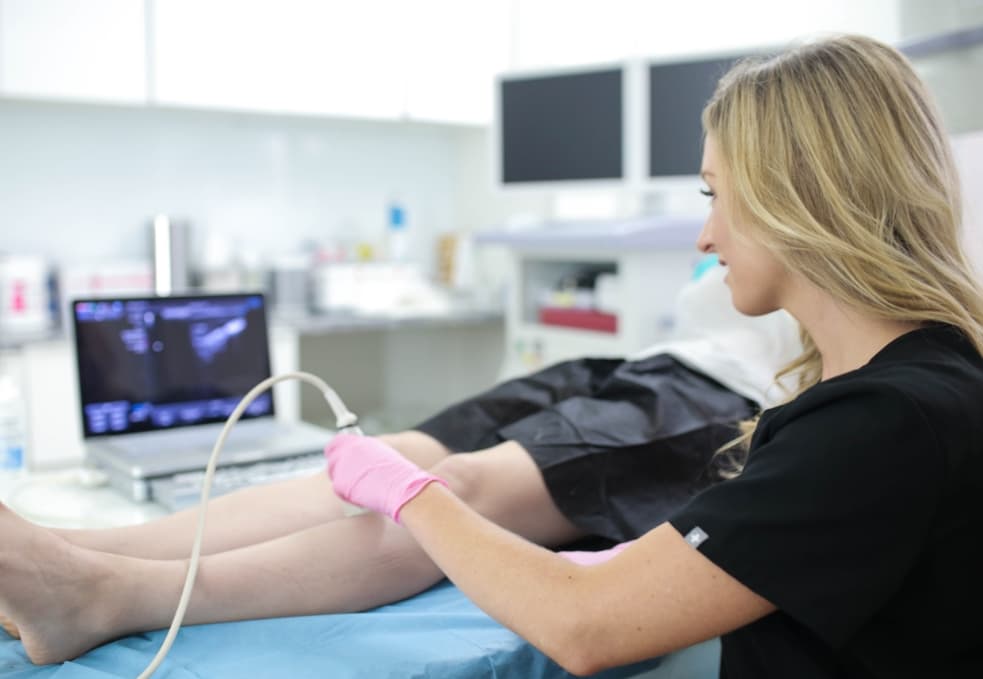How dangerous is venous insufficiency?
Chronic venous insufficiency is the primary circulatory disorder responsible for most of your vein problems, such as spider veins, varicose veins, and deep vein thrombosis. If you’re wondering about the dangers of chronic venous insufficiency, it’s possible that you may have noticed some of the symptoms of vein disease, such as spider veins, leg heaviness, and restless leg syndrome. Chronic venous insufficiency isn’t a medical emergency, but it gradually worsens with time, eventually leading to some pretty bad consequences.
What is CVI in medical terms?
Chronic venous insufficiency is a medical condition wherein your vein valves collapse, and blood flows backward. In healthy veins, the valves act as one-way doors — they allow blood to flow towards the heart, but not backward due to gravity. When your vein valves collapse or malfunction because of age, pregnancy, genetic factors, or other factors, gravity forces blood to flow backward and accumulate in the leg veins. The continued accumulation of blood in leg veins is responsible for most of your vein problems.
Early signs and symptoms of venous insufficiency:
The signs and symptoms of chronic venous insufficiency are pretty mild at the early stages. You may experience mild leg swelling, leg pain, leg heaviness, restless leg syndrome, and frequent leg cramps, especially at night or after long periods of sitting or standing still. These symptoms are so mild and benign that most people misattribute them to signs of aging or exhaustion, and the underlying vein disease goes undiagnosed. That’s why vein disease is one of the most underdiagnosed conditions.
Spider veins, varicose veins, and other vein problems
Over time, you may develop spider veins and varicose veins. Spider veins are dense clusters of blood vessels and broken capillaries that appear just underneath the skin’s surface, usually looking like a mass of spider webs crawling up your skin. Varicose veins are dense blood vessels that bulge out of your skin’s surface, usually looking like a mass of twisted, tangled, and knotted ropes or branches. Varicose veins are usually indicative of advanced chronic venous insufficiency.
Advanced complications of untreated CVI
If you still don’t seek treatment, you may start noticing some of the advanced complications of chronic venous insufficiency. The continued accumulation of blood in varicose veins increases the risk of burst veins, which would cause profuse bleeding. You may also suffer from skin discoloration because of ineffective blood circulation in your legs, the formation of non-healing wounds on your legs (ulcers), and blood clots in your leg veins (deep vein thrombosis).
Treat venous insufficiency at the earliest stage possible
Chronic venous insufficiency isn’t a medical emergency, but it gradually becomes more dangerous with time. Deep vein thrombosis is the riskiest and most dangerous complication of untreated vein disease. If the blood clots in your leg veins break away, they may travel to the lungs and induce a potentially fatal condition known as pulmonary embolism. That’s why you must consult vein doctors to explore your vein treatment options at the earliest stage possible.
Our medical centers for vein treatment in Long Island specialize in the latest minimally invasive treatments for chronic venous insufficiency. Our vein doctors perform thorough duplex ultrasound tests to visualize your blood flow and diagnose vein disease. After a thorough diagnosis, our vein doctors perform minimally invasive vein treatments that conclude within an hour with no downtime, allowing you to resume your daily activities immediately. If you have the signs and symptoms of vein disease, please schedule an appointment today.
Do varicose veins cause high blood pressure?
Chronic venous insufficiency leads to the accumulation of blood in leg veins, which, in turn, places more pressure on the leg veins. Varicose veins occur because of untreated chronic venous insufficiency. It’s extremely common for patients with varicose veins to experience high blood pressure because of the accumulation of blood in leg veins.
High blood pressure and varicose veins can influence each other. If you have consistently high blood pressure, the valves in your veins can get damaged, leading to backward blood flow and the accumulation of blood in leg veins, which, over time, leads to varicose veins. As such, high blood pressure can increase the risk of chronic venous insufficiency and varicose veins.
Are varicose veins reversible?
Varicose veins are irreversible. Once you have varicose veins, there’s no way to reverse the condition or heal the damaged vein valves responsible for chronic venous insufficiency. However, you can implement some lifestyle changes to improve blood circulation, which may alleviate the worst symptoms of chronic venous insufficiency:
- Wear compression stockings
- Elevate your legs while sitting down
- Engage in cardiovascular exercises
- Don’t sit or stand still for extended periods
How to diagnose varicose veins?
Our vein doctors will examine your leg veins, discuss your symptoms, review your medical history, and administer duplex ultrasound scans. The duplex ultrasound test involves using ultrasound energy to visualize the blood flow in your leg veins, which reveals the direction of blood flow and whether you have chronic venous insufficiency. Vein doctors can also diagnose varicose veins through a simple physical examination.
How to treat a collapsed vein valve?
If you have collapsed vein valves, you need to undergo minimally invasive vein treatments. There’s no way to fix the damaged valve, but the vein doctor can reroute the accumulated blood into healthier leg veins. Radiofrequency ablation is one of the most effective treatments for chronic venous insufficiency. The vein doctor uses a catheter to deliver thermal energy and destroy the diseased saphenous vein responsible for your vein problems, which reroutes the accumulated blood into healthier leg veins. This is one of the most effective treatments for chronic venous insufficiency and varicose veins.
